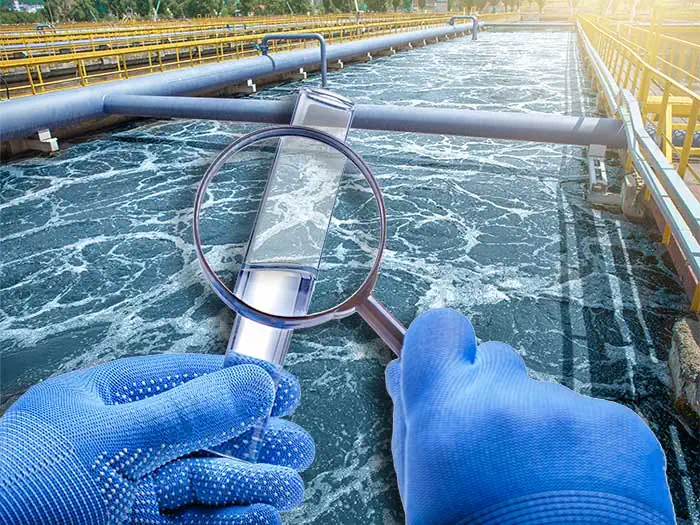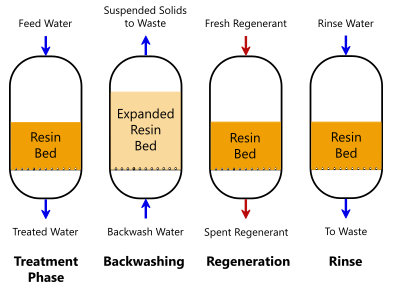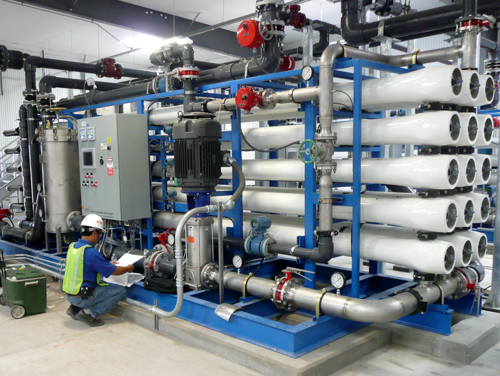PFAS Treatment in Drinking Water
PFAS Treatment in Drinking Water
Blog Article
Your Overview to PFAS Therapy Technologies and Advantages
The frequency of PFAS contamination in water resources demands a complete understanding of offered therapy innovations. Each innovation not only targets particular PFAS compounds but also plays a vital role in enhancing overall water high quality and protecting environmental stability.
Understanding PFAS Contamination
Understanding PFAS contamination is vital for resolving its prevalent effect on environmental and human wellness (m270 pfas treatment). Per- and polyfluoroalkyl materials (PFAS) are a group of synthetic chemicals widely made use of in various industrial and customer products as a result of their water- and grease-resistant residential properties. Frequently located in firefighting foams, non-stick cookware, and water-repellent fabrics, PFAS have actually gone into the setting with production processes, wastewater discharges, and leaching from landfills
When released, these materials persist in the environment, leading to extensive contamination of dirt and water resources. Their special chemical framework, characterized by solid carbon-fluorine bonds, makes them immune to deterioration, leading to a sensation referred to as "for life chemicals." PFAS can gather in the human body and the food chain, possibly causing adverse wellness impacts, including immune system interruption, developmental problems, and a raised risk of specific cancers cells.
Governing agencies and health and wellness companies are increasingly acknowledging the significance of PFAS contamination, triggering efforts to keep track of, evaluate, and alleviate its impacts. Comprehending the paths of PFAS contamination is crucial for educating public plan and establishing reliable approaches to protect both environmental and human health and wellness.
Review of Therapy Technologies
Various therapy modern technologies have actually been developed to resolve the difficulties posed by PFAS contamination in water and dirt. These technologies can be extensively categorized into a number of groups, each with its one-of-a-kind devices and efficiency in getting rid of PFAS compounds.
One famous strategy is ion exchange, which utilizes material products to capture and eliminate PFAS from polluted water. This method is especially reliable for short-chain PFAS and can attain substantial decreases in concentration degrees. Another innovation, advanced oxidation procedures (AOPs), utilizes strong oxidants and ultraviolet light to break down PFAS right into much less harmful materials. AOPs appropriate for dealing with a large range of PFAS compounds but might require cautious optimization to make the most of efficacy.

Triggered Carbon Purification
Turned on carbon filtering is a widely used method for the elimination of PFAS from polluted water, known for its capacity to adsorb a broad variety of natural substances. This technology utilizes activated carbon, a highly permeable product with a comprehensive surface area, which assists in the binding of PFAS molecules via physical adsorption. The performance of triggered carbon in eliminating PFAS is influenced by numerous factors, consisting of the kind of carbon used, the call time, and the concentration of PFAS in the water.
Among the advantages of triggered carbon purification is its versatility; it can be carried out in numerous configurations, such as granular activated carbon (GAC) systems or powdered activated carbon (POLITICAL ACTION COMMITTEE) systems. GAC systems are normally used in larger-scale applications, while political action committee can be used in smaller or short-lived setups. The innovation is fairly easy to run and maintain, making Look At This it obtainable for numerous water why not try here treatment facilities.

Ion Exchange Equipment
Ion exchange systems stand for another effective method for the elimination of PFAS from infected water, complementing techniques like activated carbon purification. These systems operate the concept of trading ions in the water with ions held on a resin material. Ion exchange materials can be particularly developed to target the adversely charged PFAS substances, efficiently recording them and allowing cleaner water to go through.
Among the main benefits of ion exchange systems is their ability to eliminate a large range of PFAS, including both long-chain and short-chain variants. This convenience makes them ideal for numerous applications, ranging from community water treatment to industrial processes. Additionally, ion exchange systems can typically accomplish reduced detection restrictions for PFAS contrasted to a few other therapy techniques, thus improving water quality.
Nonetheless, it is vital to keep an eye on and manage the regeneration of ion exchange media, as the performance can decline over time because of saturation. Proper upkeep and replacement of the material are crucial for sustaining the system's performance. In general, ion exchange systems provide a reliable and effective service for PFAS elimination, contributing substantially to safe alcohol consumption water requirements and environmental management.
Advanced Oxidation Processes
Advanced Oxidation Processes (AOPs) use powerful oxidants to properly break down PFAS substances in contaminated water. These ingenious treatment approaches produce extremely reactive species, such as hydroxyl radicals, that can break down intricate PFAS molecules into less harmful byproducts. m270 pfas treatment. AOPs usually utilize mixes of ultraviolet (UV) light, ozone, hydrogen peroxide, or Fenton's reagent, enhancing the oxidation potential and improving deterioration efficiency
The main advantage of AOPs lies in their capability to target a wide series of PFAS compounds, including both long-chain and short-chain variants. i thought about this This adaptability is crucial, as PFAS contamination typically includes mixes of different compounds with varying chemical structures. AOPs can be incorporated right into existing water treatment systems, making them a functional solution for many towns and sectors.
Nevertheless, the implementation of AOPs can be resource-intensive, requiring careful factor to consider of operational prices and power consumption. Furthermore, while AOPs are efficient in damaging down PFAS, they may not entirely eliminate all results, demanding more treatment actions - m270 pfas treatment. In general, AOPs stand for an encouraging avenue for resolving PFAS contamination, contributing to cleaner water sources and boosted public wellness protection

Verdict
By picking the suitable modern technology, communities can enhance water high quality, secure public health, and minimize the ecological risks connected with PFAS direct exposure. Continued research and application of these approaches are necessary for efficient administration of PFAS contamination in affected locations.
Report this page